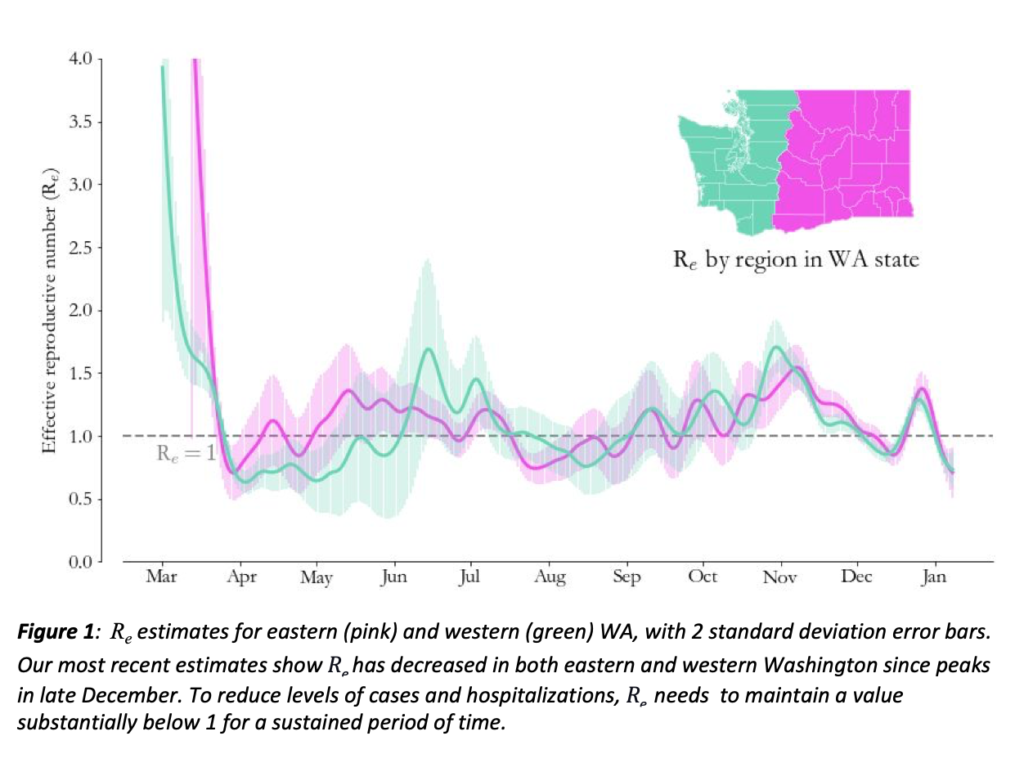COVID-19 data shows some encouraging signs as well as reasons for caution

OLYMPIA – Today the Washington State Department of Health (DOH) released the latest statewide situation report on COVID-19.
Report findings include:
- Declining COVID-19 transmission provides an opportunity to get case and hospitalization rates under control before the faster-spreading B.1.1.7 variant takes hold in the state. The best estimate of the reproductive number (how many new people each COVID-19 patient will infect) on Jan. 8 was 0.73 in western Washington and 0.71 in eastern Washington. The goal is maintaining a reproductive number well below one—meaning COVID-19 transmission is declining—for a substantial amount of time.
- Case counts dropped sharply after the first week of January. The decline in cases from early to late December was likely due in part to decreasing transmission, and in part to fewer people seeking care or getting tested over the holidays. The steep increase that followed was possibly related to temporary factors such as increased transmission from holiday gatherings and higher levels of health care seeking and testing resulting from delays in doing those things over the holidays.
- Case rates are still high across the state but are moving in the right direction. Twenty-nine of 39 counties had rates above 200 new cases per 100,000 people over the two-week period ending on Jan. 14. Five counties had rates above 500 new cases per 100,000 people.
- Many counties saw sharp declines in case counts after the first week in January, returning to early to mid-November levels. That includes all five largest counties (Clark, King, Pierce, Snohomish and Spokane), most medium-sized counties (Benton, Franklin, Grant, Kitsap, Skagit and Thurston) and several small counties (Chelan, Douglas, Kittitas, Mason, Stevens).
- Other counties experienced smaller declines or flattening trends in January.Yakima County case counts declined to mid-December levels. Whatcom County saw slight declines from its highest-ever peak levels in January. Grays Harbor County experienced slight declines to late November levels. Whitman County recently saw slight declines. Cowlitz and Walla Walla counties experienced plateaus after the first week of January.
- Total hospital admissions flattened at a high level starting in late November, with a slight decline beginning in mid-January. Hospital bed occupancy plateaued in late December and early January, then started to decline slightly in mid-January.
“While we are seeing some initial encouraging signs in the data, disease activity is still high and our state just detected the first cases of a variant that spreads more easily and quickly,” said Dr. Scott Lindquist, the state epidemiologist for communicable diseases. “Now is the moment to drive down our disease rates and free up more hospital capacity by reducing the number of severe cases that require hospitalization. We can all contribute by avoiding gatherings with people who don’t live with us, wearing masks, watching our distance and washing our hands.”


